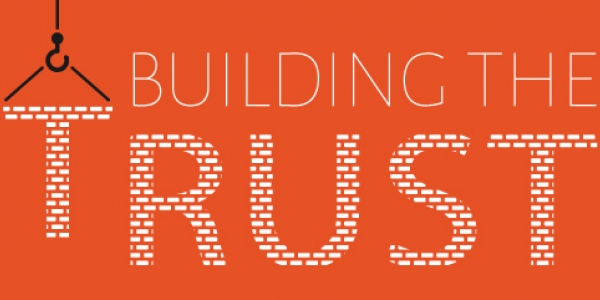Building the trust

The key to a good relationship lies in trust – and that goes for online relationships too. If your online customers trust you and perceive you to be honest, they’ll be considerably happier to join the conversation and be a part of your brand’s story...
Today’s sophisticated customers are bombarded by multiple channels of communication; all day and everyday, they don’t seem to turn themselves off. And we’re compliant prey, exploring the digital stratosphere with invisible targets on our backs. Inboxes are piled high with the latest offers and events from sources we no longer recollect signing up to and, when we peruse other sites looking for information, adverts pop up in a big brotheresque fashion to remind us of what we’ve looked at in the recent past and how desirable those purchases may be.
We’ve definitely reached a collective point where we’re all getting a little bit jaded by the constant digital marketing that threatens to engulf us and we are certainly more knowing when it comes to companies’ attempts to engage us and sell us their wares. Any company that wants to build a relationship has to really earn it.
This point has been particularly proven in the last year or so with an evident swing towards a more personal form of marketing which addresses the individual rather than the group. Recipients are increasingly opting out of generic, ‘scatter gun’ messaging and only hanging on to the personal stuff.
As consumers, we know that now is the best time for us to get our voices heard and we can do that by demanding a public, virtual audience with the seller – we can hold the brand accountable.
Truth is, we have never had so much power thanks to the digital age. With a couple of clicks, we can easily move from source to source, gathering information, choosing our influencers and dismissing the lack-lustre and those empty vessels that simply have nothing of interest to say.
As a more knowing band of shoppers, we are wary of who to trust and far quicker to see through fakeness. We trust friends, family and their known contacts and we will trust other consumers – but not obvious marketers, desperately selling their brands’ wares.
The best way to convey this message of authenticity and build personal relationships with customers is to make a platform for the customer review. A recent poll showed that 62% of online shoppers were more likely to purchase if they read a positive customer review of a product or service. With digital word of mouth on the increase, opinions posted by consumers make up the most popular form of advertising, creating a conversation around the brand and making it social.
The customer review landscape has changed in the last three years. Platforms and tools that were introduced have now been tested and we now know what works and what doesn’t and can build it into a bigger picture. Reviews are now easily shared, with customers actively requiring the information that comes from each review.
From a brand’s perspective, this is a prime opportunity to address any negative experience that the customer might have had and to turn it into a positive. You can now become a voice, someone that the customer can actually speak to who is prepared to put his or her head above the parapet and actually and properly engage. By adopting a position of genuine transparency - acknowledging mistakes and outlining how you will address them - a level of trust can be built.
The use of the customer review as both a sales tool and a relationship builder fits with the most modern of customer relationship management models. The trend is for total transparency – we now talk about how things are made and what ingredients go into the mix and by doing so we create a narrative. The customer review becomes a part of this narrative.
The key to getting it right is, of course, to show the negative as well as the positive and seek to address the same. Responding in a timely and an honest manner is critical to winning that all important trust.
